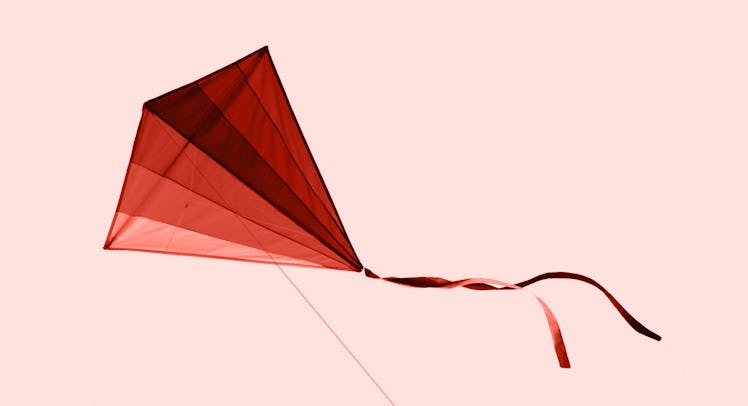How To Make And Fly The Perfect DIY Kite
The basics aren’t too difficult to master, even if you flunked physics. Here’s the science you need to dominate kite flying this season

When the snow melts it’s time to untangle the old spool and teach your kid how to fly a kite. Kite engineering is a time-honored dad tradition just as kite flying is a rite of passage. But that doesn’t mean you have any clue how to do it and here’s the bad news: You’re not going to figure it out unless you have a solid foundation in aerodynamics. The good news? The basics aren’t too difficult to master, even if you flunked physics.
Here’s the science you need to dominate kite flying this season:
Meet The Four Forces
We’re getting ahead of ourselves but, once your kite is in the air, Newton’s Second Law is how it will stay aloft and climb. Newton tells us that all flying objects are subject to four forces—weight (the force pulling the kite downward), lift (the force pushing the kite upward), tension (your force pulling the kite toward you), and drag (the wind’s force pushing the kite away). When these forces are perfectly balanced (life=weight; tension=drag), the kite hovers in equilibrium. When lift dominates weight, the kite ascends. When drag beats out tension, the kite speeds away.
So whether or not your adventure ends in humiliation (and shelling out cash for a new kite), depends entirely on the give-and-take between these four forces. Your kite won’t fly unless you overcome weight and tension—and it’ll crash the moment you fall victim to those two forces.
The Four Phases Of Flight
From airplanes to rockets, everything airborne must pass through four stages of flight (release, launch, climb, and cruise). Your kite is no exception. It begins its fight against gravity with a sort of combined release and launch phase, in which the kite must generate enough lift to counteract its own weight. That’s usually not too difficult—a well-designed kite will have an aerodynamic shape and low weight to begin with—but you can help it along by adding velocity. And yes, that means convincing your kid to run with your kite on a less windy day to generate sufficient lift.
The tricky part is the climb and cruise phase. There is, in fact, a science to maintaining kite strings at altitude. One tip is to pull the string occasionally, because this increases the velocity of the kite and boosts its lift, helping it climb or maintain a comfortable cruise. In the hands of an amateur—or when your kid demands a turn—the balance between the four forces can become disturbed. This causes the kite to dip and twirl until it either fixes its own equilibrium or crashes.
So What Makes A Great Kite And Kite Flyer?
The perfect kite will have an aerodynamic shape (to increase drag) and very low weight so that it’s easy to conquer the release and launch phase. Keeping your kite climbing is a matter of increasing lift (best accomplished by strategically tugging on the string). Maintaining a cruising altitude is a balancing act between the four forces, but not one that’s impossible to figure out. If your kite is descending, add lift. If your kite is traveling too far laterally, add tension.
Ok, But Why Does My Kite Need A Tail?
Most kite makers recommend a tail between two and 8 times the length of the kite. There’s a good reason for this. The tail’s main function is to add stability to the kite during the climb and cruise phase, by adding weight and drag. But stability can be a double-edged sword. First of all, more stability means less maneuverability—fighter planes are traditionally quite unstable, while your average Cessna is so stable it practically flies itself. So if you’re hoping to pull off some rad moves (or try some of that Eastern kite battling) you may want less tail or no tail at all.
Even if you’re looking for a peaceful flight, however, too much tail can cause problems. Because every inch of tail contributes to a little more weight and drag—the two forces keeping your kite from taking off. A longer tail might mean you’ll need stronger wind or a faster kid to run your kite into the air. In a word, the tail helps the kite climb and cruise, but makes the launch far trickier.
This article was originally published on